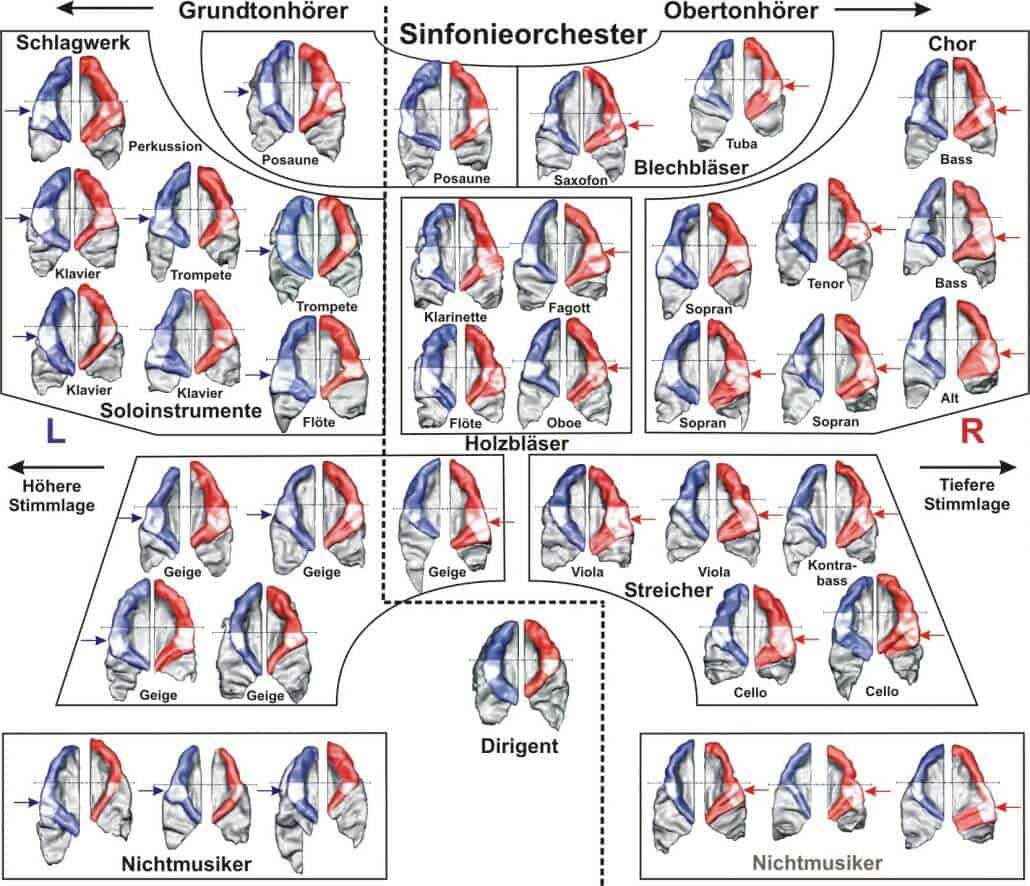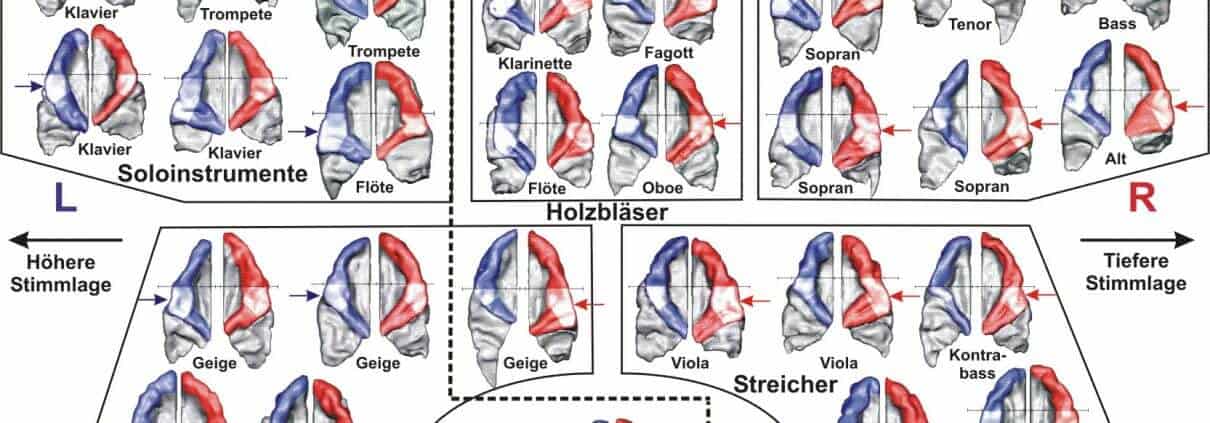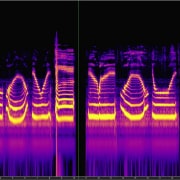How Your Brain Handles Overtones
Why One Plays Violin and the Other Cello
First published at Universitätsklinikum Heidelberg on 21.08.2005 (Repost with kind permission)
The ability to perceive fundamental and overtones is anchored in the brain / Scientists from Heidelberg publish a study of orchestral musicians in “Nature Neuroscience”
→ Here you can do the Heidelberg listening test yourself
The same sounds can be perceived very differently by different people. The cause resides in the brain. Because the sound of a tone depends on structures in the cerebrum: Those who hear more overtones and thus rather long-lasting, deep sounds have more neuronal cell substance in the hearing centre of the right cerebral cortex, the so-called Heschl’s gyrus (transverse temporal gyrus). Those who hear the root more strongly or prefer short, sharp tones show this characteristic in the left half of the brain.
These are the results of a study published on August 21, 2005 as an online publication of “Nature Neurosciences” and in the September print edition . Scientists from the Department of Biomagnetism at the Neurological University Hospital in Heidelberg, together with colleagues from the Universities of Liverpool, Southampton and Maastricht, examined a total of 420 people, the majority of whom were music students and orchestra musicians.
Musicality independent of hearing type / connection with rhythm recognition
Extensive listening tests were used to determine whether the test persons belonged to the group of “fundamental listeners” or “overtone listeners“. (For each natural tone, a multitude of higher tones are produced in addition to the fundamental tone, which determines the pitch. These overtones complement the frequency spectrum of a tone and give it its individual timbre.) In 87 subjects from both groups, additional brain structures were visualized in the magnetic resonance tomogram and their functions were measured with magnetoencephalography (MEG). MEG is a very sensitive method for measuring brain activity. It measures low magnetic fields generated by active nerve cells in the cerebral cortex.

Overtone and fundamental pitch listeners in the orchestra (c) Neurological University Hospital Heidelberg
The Heidelberg study has shown that the seating arrangement in a modern symphony orchestra follows the individual ability of sound perception, which is anchored in the left or right hemisphere of the brain. Fundamental listeners with high instruments (e.g. violin, flute, trumpet) are located to the left of the conductor and overtone listeners (e.g. viola, cello, double bass, bassoon, tuba) to the right. Image source: Neurological University Hospital Heidelberg
“These two types of hearing also exist among non-musical people,” explains Dr. Peter Schneider, physicist, church musician and MEG specialist in the Heidelberg research group. However, the processing of music is also linked to the ability to hear the fundamental or overtones.
“Overtone listeners can perceive long-lasting sounds and tones better,” says Schneider. This ability is located in the right hearing center. The fundamental listeners, on the other hand, stood out due to a more virtuoso playing technique and better processing of complex rhythms, which is linked to the faster processing in the left hearing centre.
Singers and cellists are “overtone listeners”.
Orchestral musicians have also selected their musical instrument according to their listening type, according to another study recently presented by Dr. Schneider at a specialist congress. Fundamental listeners prefer drums, guitar, piano or high melodic instruments, overtone listeners prefer deep melodic instruments such as cello, bassoon or tuba. Singers also belong to this group.
Musicality has nothing to do with the types of hearing, but it can also be found in the brain structures. In a publication in August 2002, again in “Nature Neuroscience”, Dr. Schneider and his colleagues from Heidelberg have already discovered that professional musicians have more than twice as much brain mass in the primary hearing centre as non-musical people. In addition, as MEG measurements have shown, their brains react more strongly to sounds.
For further information please contact:
Dr. Peter Schneider
E-mail: [email protected]
Further information on the Internet:
www.idw-online.de/pages/de/news51506
www.klinikum.uni-heidelberg.de/index.php?id=5503
Image source: Neurological University Hospital Heidelberg









Leave a Reply
Want to join the discussion?Feel free to contribute!